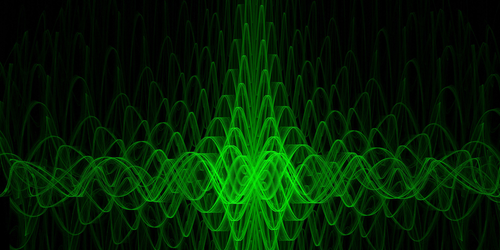Quantum Oscillations Appear at High Temperatures
Magnetic fields can induce quantum oscillations known as Shubnikov-de Haas (SdH) oscillations in the electrical conductivity of conducting materials at low temperatures. These oscillations have frequencies that depend on the electron density. Now, Jakša Vučičević at the University of Belgrade, Serbia, and Rok Žitko at the Jožef Stefan Institute, Slovenia, predict in these materials the existence of quantum oscillations at high temperatures [1, 2]. These oscillations have a frequency that is independent of the electron density. The results could lead to the development of more efficient electronic devices.
The duo considered a group of interacting particles arranged on a square lattice. They then calculated the electrical conductivity of the system in the presence of a strong magnetic field. At low temperatures, their theory predicts the expected SdH oscillations. However, as they increased the temperature of the system, these oscillations disappeared, and oscillations previously unseen in theory emerged. These oscillations—which Vučičević and Žitko called Brown-Zak oscillations, as they resemble high-temperature quantum oscillations measured experimentally in graphene superlattices—have frequencies that are independent of the electron density of the system.
The duo predicts that these high-temperature oscillations are caused by incoherent electrons tunneling between the eigenstates of the system’s Hamiltonian. And because their theory shows that the amplitude of the oscillation depends on the properties of the specific system, such as doping level, Vučičević and Žitko say that observations of these oscillation predictions could provide information about the scattering mechanisms and dominant interactions in strongly correlated materials.
–Martin Rodriguez-Vega
Martin Rodriguez-Vega is an Associate Editor for Physical Review Letters.
References
- J. Vučičević and R. Žitko, “Universal magnetic oscillations of dc conductivity in the incoherent regime of correlated systems,” Phys. Rev. Lett. 127, 196601 (2021).
- J. Vučičević and R. Žitko, “Electrical conductivity in the Hubbard model: Orbital effects of magnetic field,” Phys. Rev. B 104, 205101 (2021).




